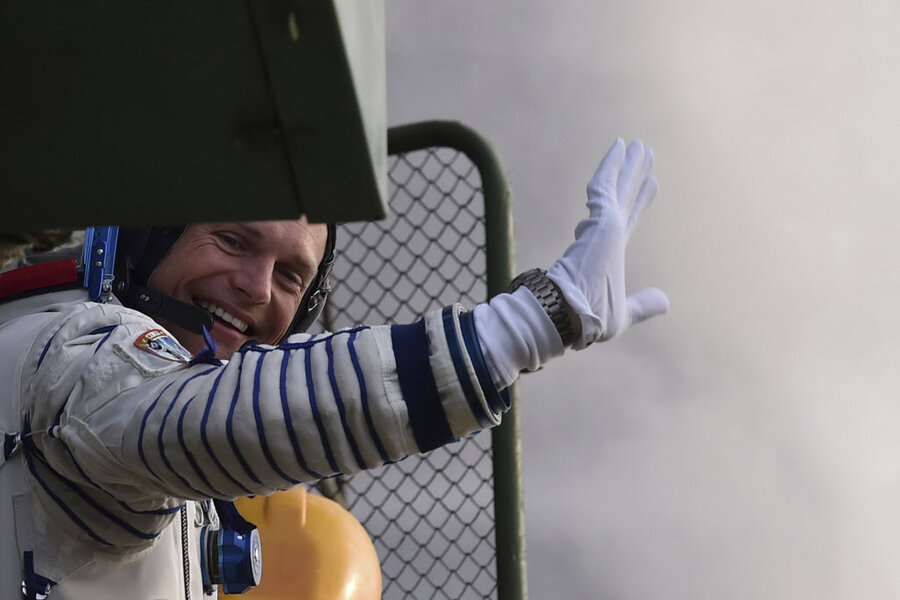The first Dane in space is bringing friends ... 20 LEGO astronauts
Loading...
At 12:37 Eastern time on Wednesday, the Soyuz TMA-18M spacecraft lifted off from the Baikonur Cosmodrome in Kazakhstan, carrying the first Dane in space and his Legos and marking the 500th spacecraft launch since Yuri Gagarin’s first mission to space in 1961.
Dane Andreas Mogensen along with Russian Sergei Volkov, and Kazakh Aidyn Aimbetov will arrive at the International Space Station on Friday after a two-day flight through space. “For the past two years, the crews have taken a more direct, six-hour flight, but the Russian Federal Space Agency decided last week to revert to the traditional route, citing security concerns after the International Space Station had to adjust its orbit to dodge space junk,” reported the Associated Press.
Six astronauts are already on board ISS, so the arrival of the Soyuz will bring the number of station inhabitants to nine for the first time since November 2013. But there are more than just nine humans on board. Twenty LEGO figurines will also call ISS home.
The European Space Agency and LEGO Education have partnered together to run “a competition for Danish school children to tell a story about my [Mogensen’s] mission using LEGOs and making a video of their story,” wrote Mr. Mogensen on a Reddit "Ask Me Anything" message board “The LEGO mini figurines are one way that we hope to connect with younger children.”
The custom LEGO figurines don the ESA logo or one of the two “iriss” mission patches and will be given out as prizes to the school children in the joint ESA and Mogensen mission competition.
This isn’t the first time LEGO toys are making the journey to space, however. In 2011, LEGO sent three figurines of the Roman god Jupiter, his wife Juno, and Galileo Galilei to Jupiter as part of the "LEGO Bricks in Space project," a NASA sponsored initiative designed to inspire children to pursue science, math, engineering, and technology.
More recently, Soyuz TMA-15M crew members revealed three LEGO figures customized to look like the astronauts, this past January.
Beyond educational outreach, Mogensen will “control three rovers from space in two experiments, hunt elusive sprites during thunderstorms, purify water with a new nanotechnology membrane that mimics cells found in every living being on Earth, wear a tailor-made SkinSuit to alleviate back problems and use a mobile headset that allows ground control to look over his shoulder as he works,” wrote ESA on the iriss mission page.
Mr. Aimbetov and Mogensen are scheduled to return to Earth on Sept. 12 with Russian Gennady Padalka, the current station commander. NASA’s Scott Kelly will assume command and complete a year-long research mission with Russia’s Mikhail Kornienko, foreshadowing a potential trip to Mars.
Track Soyuz TMA-18M’s journey to the ISS. You can also follow Mogensen or the live iriss blog to keep up to date on the full mission.
This report includes material from the Associated Press.





